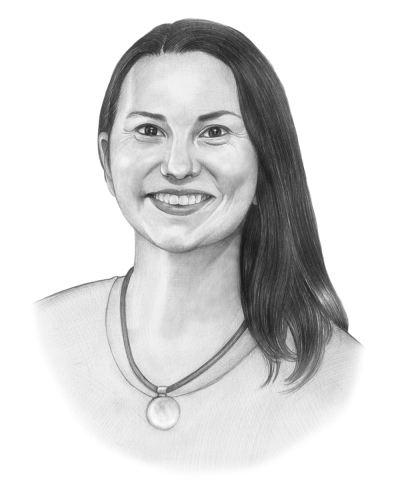 Delaware Museum of Art.
Delaware Museum of Art.  Illustration Denise Nestor.
Illustration Denise Nestor.
The 2020–21 issue of Art in America’s Annual Guide, released in December 2020, includes interviews with museum directors about how they responded to the Covid-19 pandemic. The Delaware Art Museum was about to embark on an ambitious reorganization of its permanent collection last spring when COVID-19 struck. Molly Giordano discusses how the museum adapted while continuing to form bonds with the community.
I always tell people that 2020 was supposed to be our year. We were going to start reinstalling our first-floor galleries in March, but that was delayed until October. We had plans to renovate the front entrance, adding steps and platforms to make the museum more accessible and welcoming. We were also about to launch a full rebrand, with a new website. Although we were disappointed to delay these projects, all our plans are still active.
Our curatorial and learning engagement teams have been working on a community-focused reinstallation for several years. They solicited feedback, asking people to put Post-its on the gallery walls after reading the label copy to say what resonated with them and what they wanted to know more about. We ran focus groups and tours to determine which routes through the galleries felt the most intuitive. In addition to getting the community’s perspective, the curators were eager to include newly acquired works of art, as well as new scholarship that has emerged since the last reinstallation more than a decade ago. We’re excited to unveil our reimagined first-floor galleries on a rolling basis. They will look beautiful, but we hope they also send the message that our community is shaping who we are as an institution.
We have the beautiful nine-acre Copeland Sculpture Garden, so in the last nine months we’ve used it quite a bit, for outdoor concerts, outdoor lectures, and partnerships with local arts groups. For example, Delaware Shakespeare recently paired monologues with sculptures in the garden. Small groups, wearing masks, of course, could rotate through the garden and see the actors perform. The most popular work in the garden is visible from the street: The Crying Giant [2002] by Tom Otterness. The figure holds his head in his hands in sorrow. The piece was made in response to 9/11, but it’s resonating a lot with the community lately. Truly, people just enjoy walking through the garden and having something beautiful to look at. There’s a labyrinth in the back, and a lot of people have been using it as a peaceful, meditative experience. On October 31 we worked with community members to organize a Dia de Los Muertos labyrinth walk, where visitors brought pictures of people who died of Covid-19, so that we could remember them. In this same vein, we will soon launch a photo installation of essential worker portraits.
We’ve also done quite a bit online. One of the simplest things has been a weekly email featuring an artwork from the collection, chosen by a member of the staff or the community, who gives a deep dive into it. Back in March 2020, I wrote about another piece in the sculpture garden, Domenico Mortellito’s Protecting the Future [1966–67], where an adult figure bears a heavy weight while protecting a small child. I had a baby the last week of March, and with another small child at home, this was a very difficult time for me. I wrote about what this work meant to me: we adults were holding up the world to protect our children during a time that is very scary for all of us.
Source link : https://www.artnews.com/art-in-america/interviews/molly-giordano-fostering-community-driven-museum-director-spotlight-1234584045












